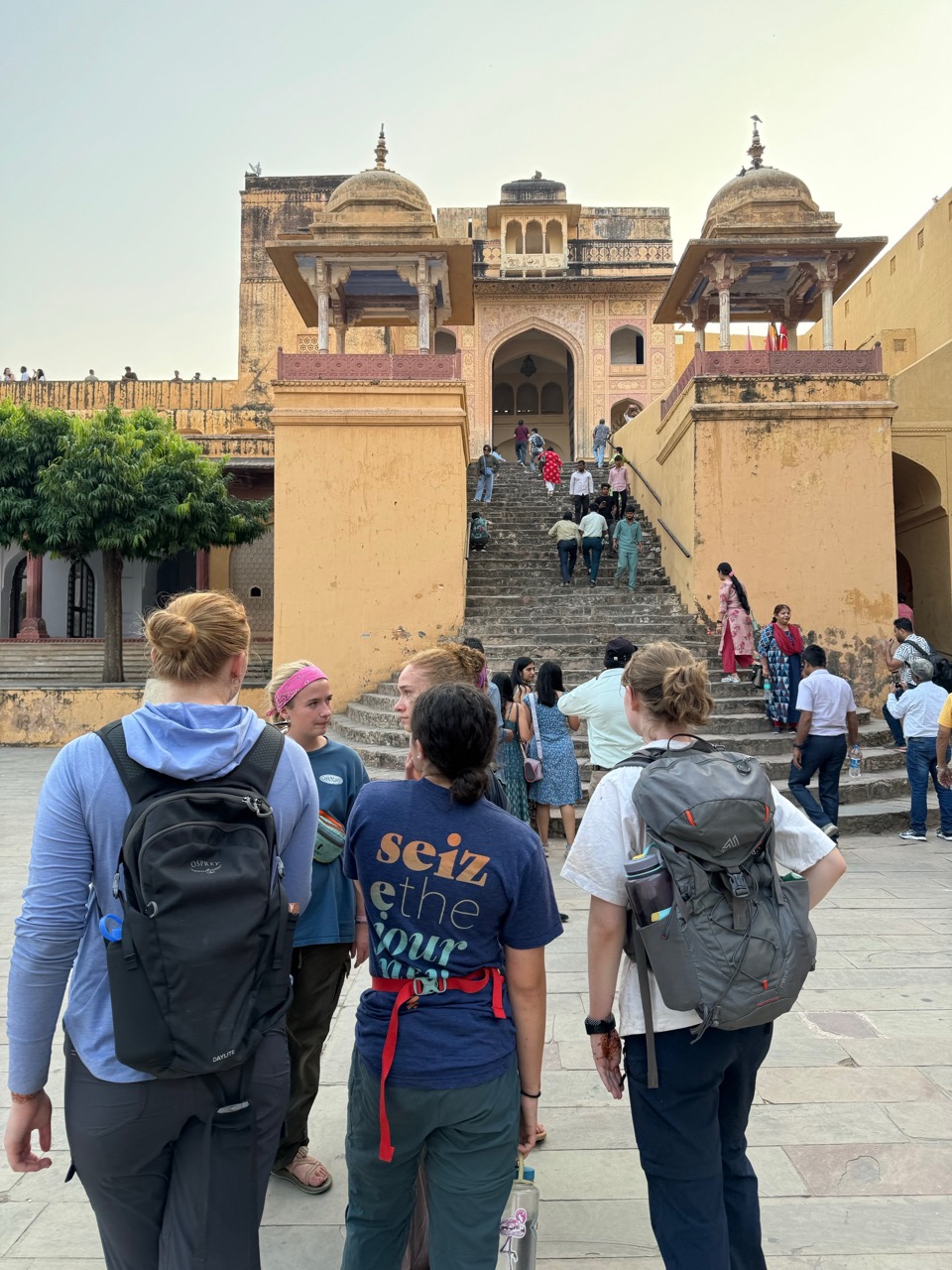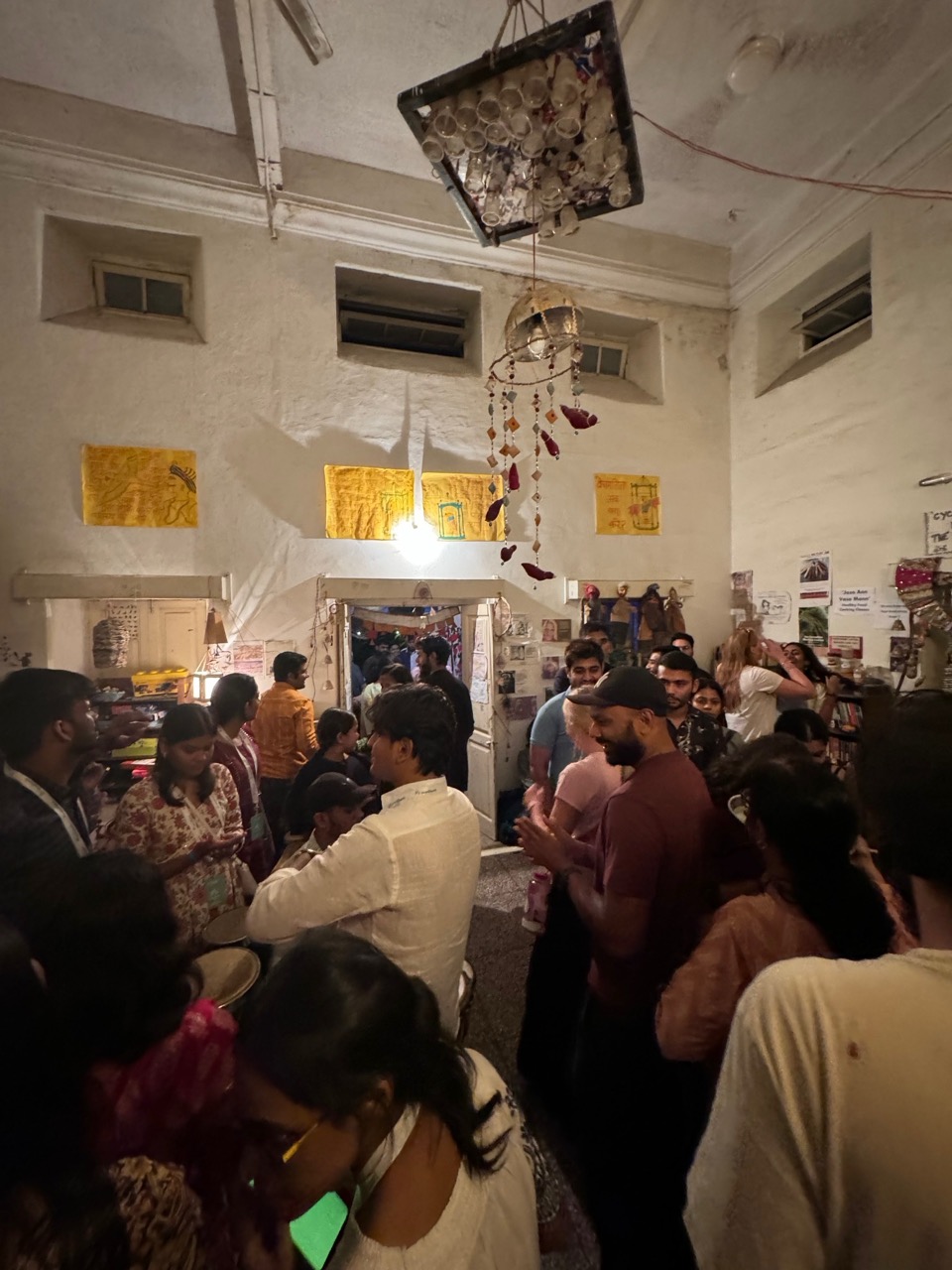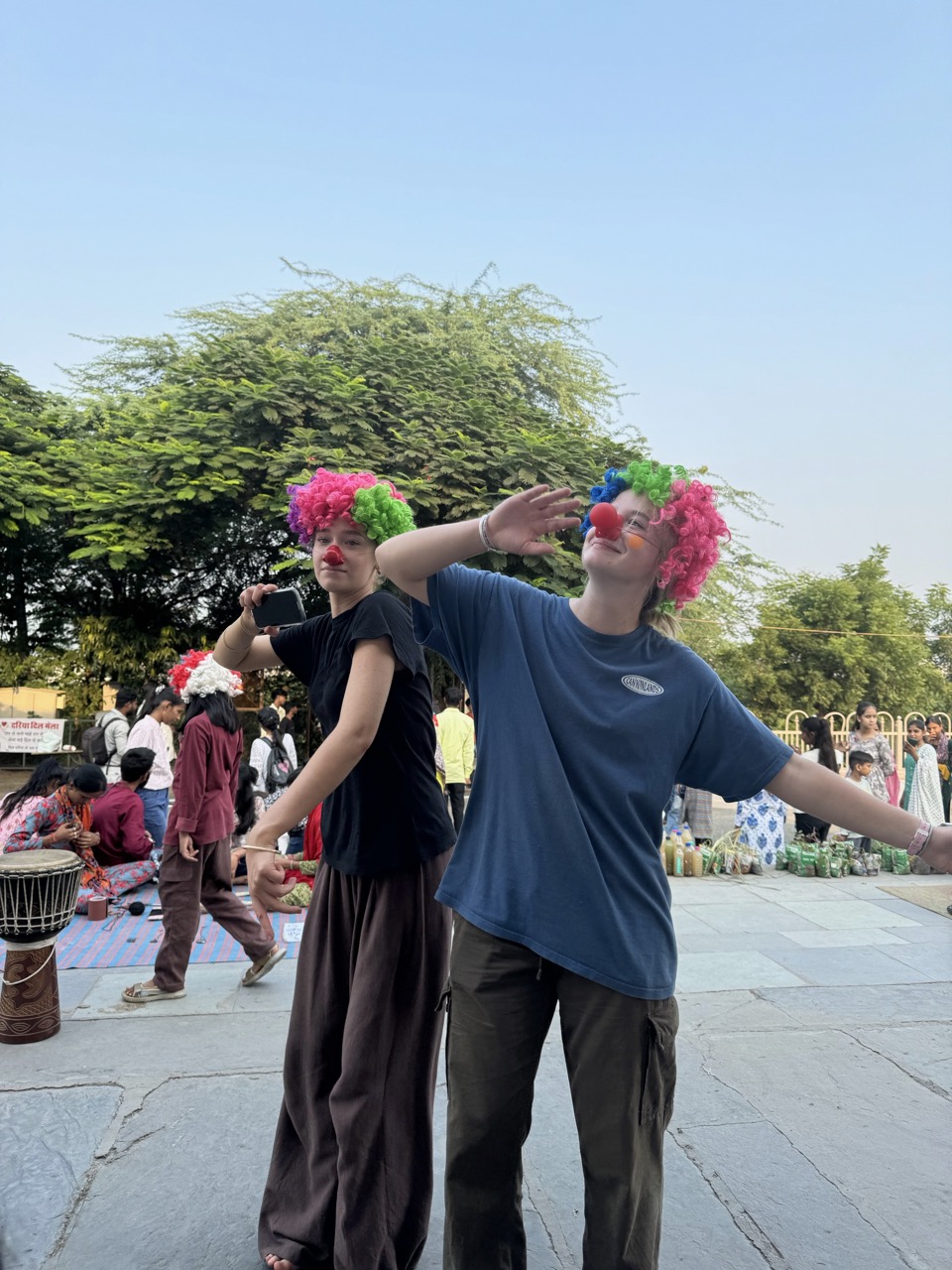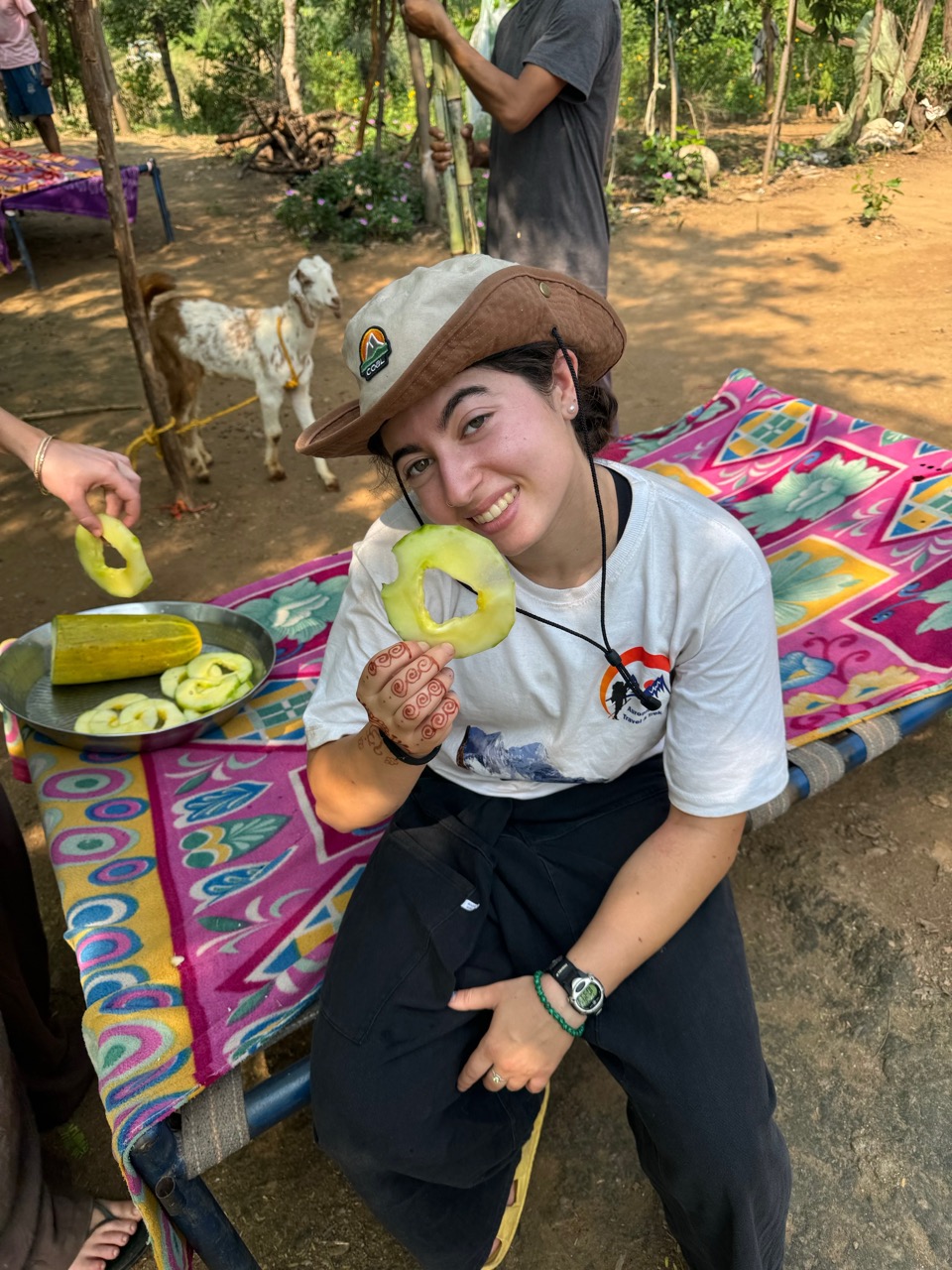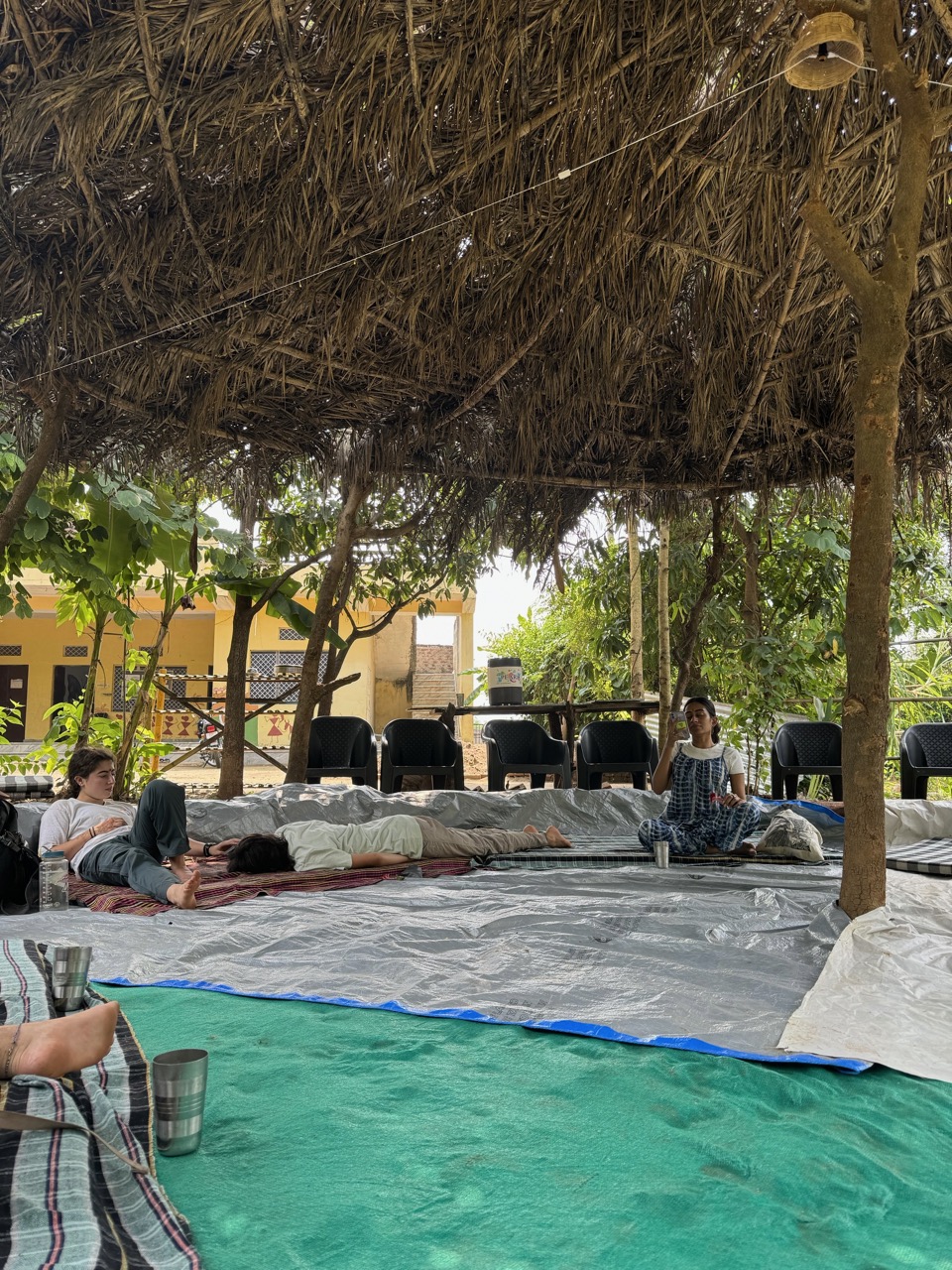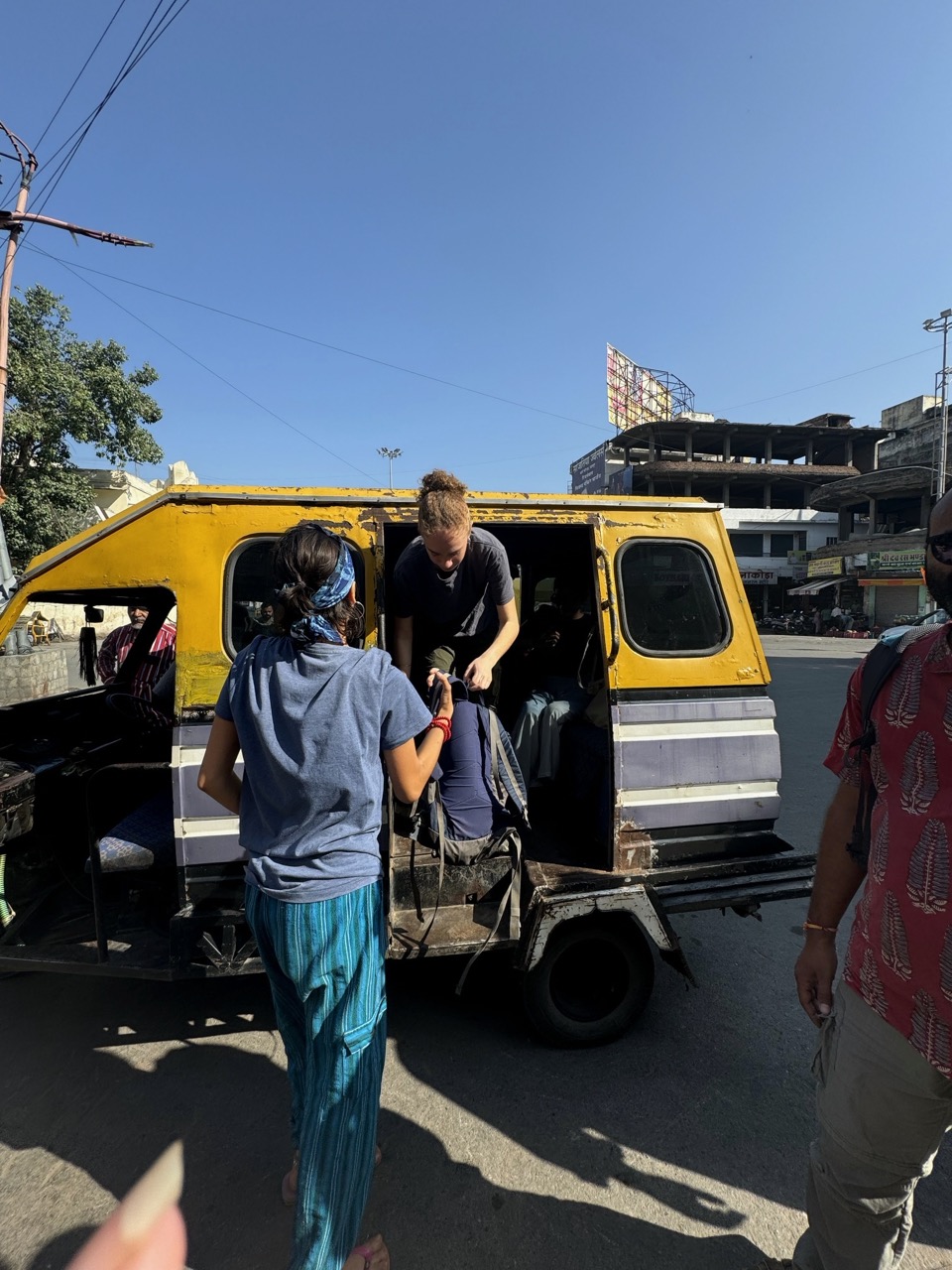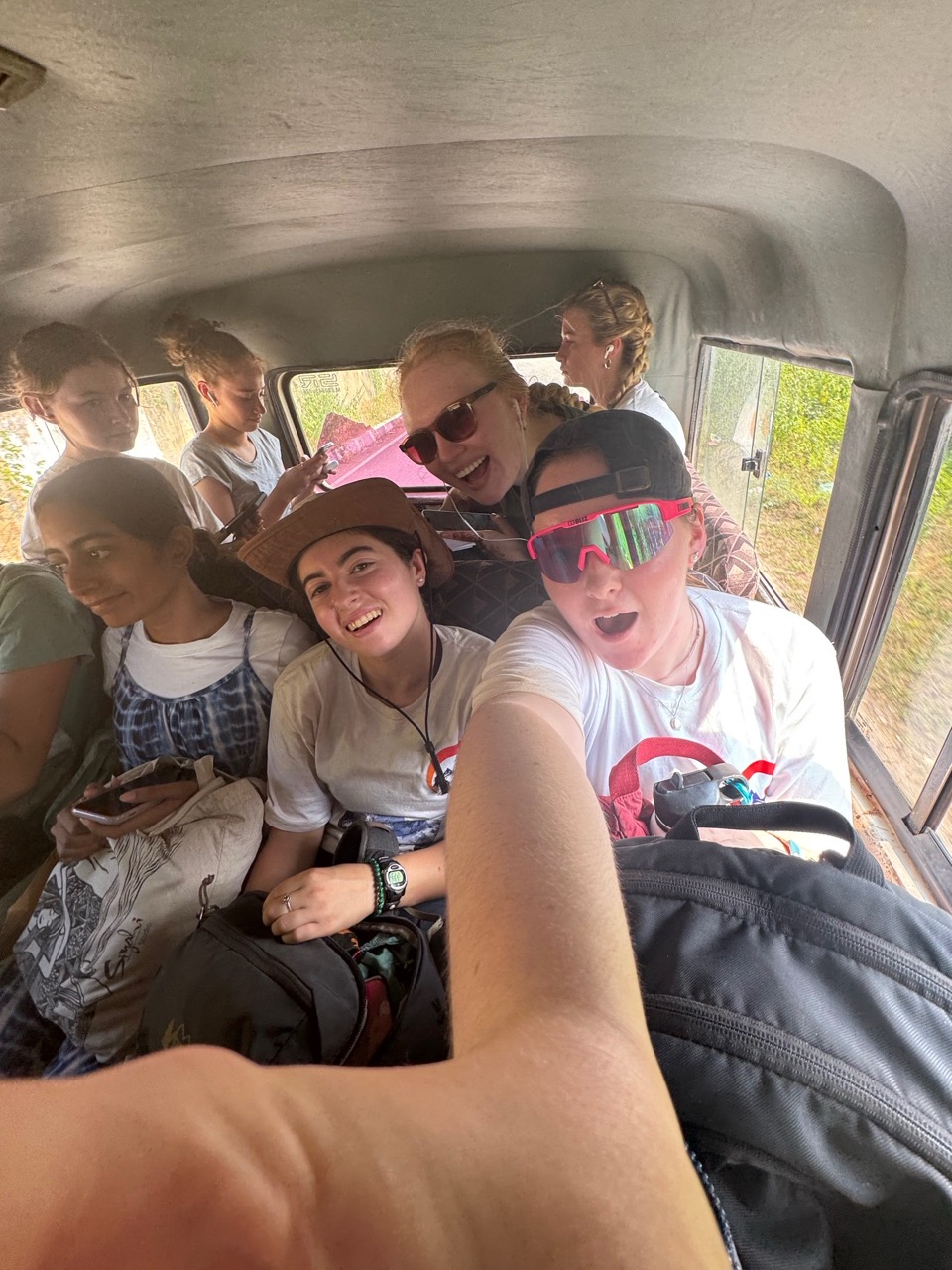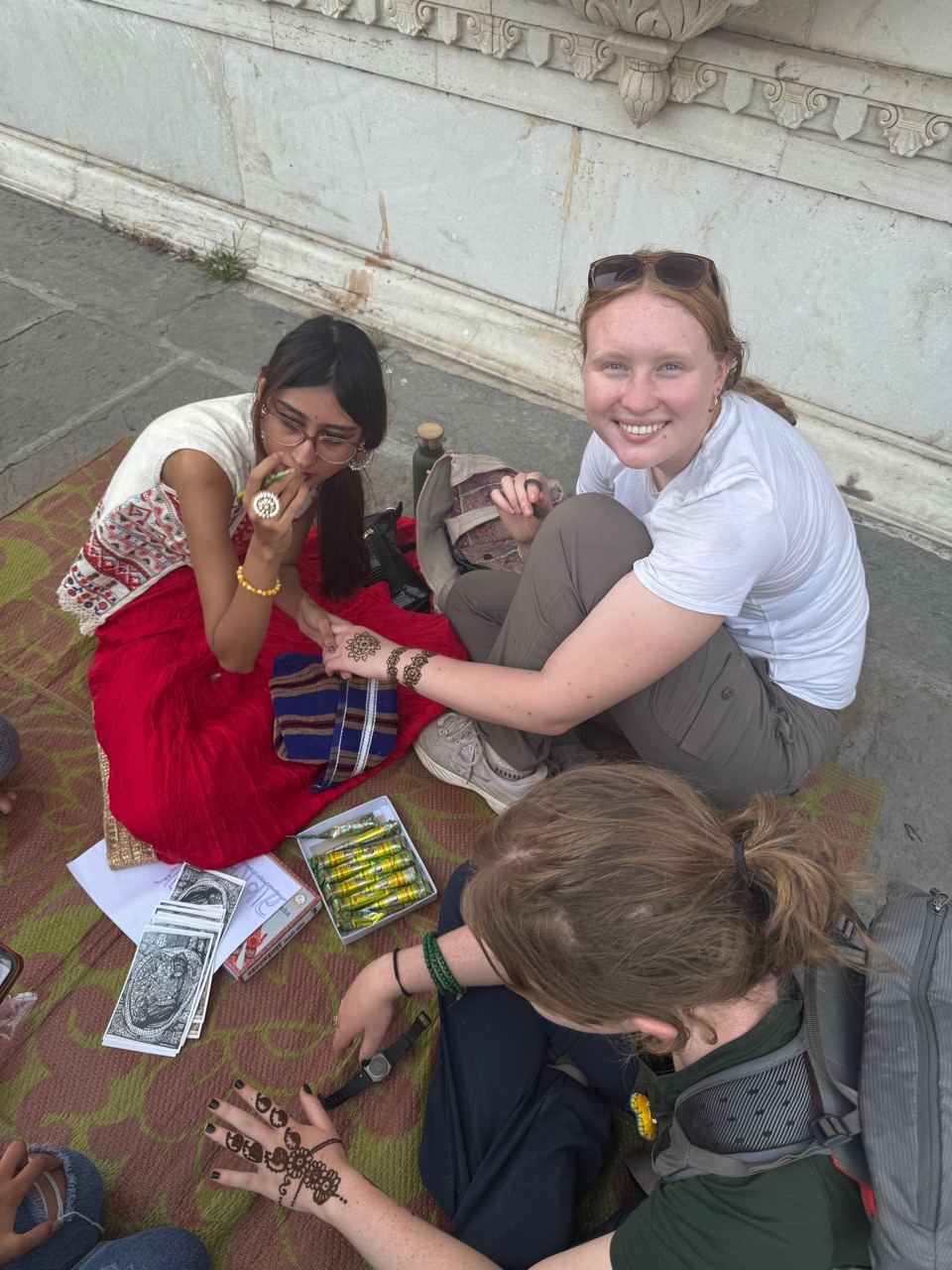Written by India & Nepal Students, Mae Reinke and Stephanie Jones
What’s New in Our Journey?
We arrived at the Shikshantar campus after a long travel day from Kathmandu to Udaipur. The campus was full of eco-built structures, colorful murals, and a junglesque ecosystem. After crashing hard, we had an incredibly warm welcome the next morning by our leaders and the family that lives on the campus. Throughout the whole week, the food was amazing traditional Indian food cooked by didis from a nearby village and Mona (the mom of the campus family). We gobbled roti and pineapple jam many times a day.
For some background, Shikshantar is an umbrella of nontraditional learning programs. We were participating in Swaraj University which fell under this umbrella. The week was dedicated to unschooling and exploring ways of learning that extended beyond stereotypical memorization styles. A major part of this was learning through spending time in the city of Udaipur. The city is filled with an assortment of foods, shops, chai, and restaurants. Rickshaws line the streets, motorbikes buzz by, and the energy of the community is alive and well. Our first experience in the old city was a tour. We learned about the different shops, the prevalence of reused sustainable goods, and ancient architecture. Later in the day, we found ourselves at a piercing shop. Many many nose rings and earrings were added. It was a great bonding experience. Walking around the old part of town which at one point was a walled city is like exploring a maze that is alive. Houses that are hundreds of years old blend with cows and the honking of horns so that every sense melds into one. To get around the city our mode of transportation was rickshaws. We were blazing through the streets in the green and yellow many times with at least one person hanging their legs out the trunk.
Besides spending a lot of time in town we also got the chance to participate in Shikshantar community events. These included a weekly community cafe and a gift festival. Both programs are intended to build community and provide opportunities for connection. The cafe was a community gathering at the Shikshantar building in the city that was filled with music and conversation. The gift festival was a public gathering on the walkway beside the lake where people shared experiences, activities, and food with anyone who passed by and wanted to participate. Some of the “gifts” people brought included doing henna, playing music, and clowning. Both of these events provided an opportunity to interact with a large swath of the population.
During our time with the Shikshantar and Swaraj University community, there were plenty of opportunities for tough conversations. While at times uncomfortable, these conversations provided an opportunity to deeply listen to a wide variety of opinions and life experiences. Shikshantar and Swaraj are built around the values of unschooling. Experiential learning, student-directed curriculum, and intentional community were some of the identifiable values. Tied into that was deep dissolution ment with the mainstream school system. While I will not speak on the group’s behalf I (Steph) know I personally did not identify with all the negative generalizations about the school system. Within a day of being at the Swaraj campus, we had heard that schooling was a crime against kids. My experiences often contradicted the philosophical ramblings. While at times intense listening and emotional reservedness were important in these situations they also allowed me to reflect on my own school experiences in an entirely new light. This point of tension fueled conversations about the differences between the Indian and American school systems and encouraged discussion about the different methods and contexts of education. It challenged all members of the group in different ways but the conversations allowed us a window to unexpected new positions.
One powerful, intentional conversation our group got to have was with Dr. Nishta, a homeopathic doctor and psychologist. Our talk was centered around traditional gender roles and the lives of women in Rajasthan. The region is relatively conservative and therefore the emphasis on tradition is very engrained. Dr. Nishta’s grace and power when talking about her experiences and the work she does to support women was incredible. The scale of the challenges women face in Rajasthan is something I have never experienced before. From child marriage to the pressure of upholding family honor, to the limited prevalence of women in the workplace, it was incredibly profound. This conversation provided valuable context for us as we were further immersed in both Rajasthani and Indian culture and gender norms.
Beyond the intellectual challenge of tough conversations we had some more tangible challenges this week, for this, I will pass it over to my co-leader Mae.
Challenges We’ve Faced (and Conquered!):
Our first challenge came when I walked into the bathroom, only to spot a flickering light. At first, I thought someone had lit a candle, but as I opened the door further, I realized it was actually the waste bin that was alight. The bin, which we used for toilet paper disposal, had caught fire, melting the plastic and incinerating the paper. For a moment, I was frozen, just staring at the bin in surprise. All I could say was, “There’s a fire.” Once the shock wore off, I managed a louder, “There’s a fire!” and quickly evacuated the bathroom, with Sarah, Iona, and Nora right behind me. Thankfully, everyone was safe, and the fire was promptly put out. It turns out a heating rod had fallen into the bin, igniting it. It wasn’t as bad as we initially feared—when we checked later, we even found a little frog in the debris, hopping happily! All was well.
But just a few nights later, we faced another unexpected visitor: a snake! Nora Thomas, our brave “monster slayer,” was the first to encounter it. “I went to grab my water bottle, and as I came back to close the door, I noticed it wouldn’t latch,” she recalled. “I looked up and saw the snake coiled there. I took a step back, and it dropped to my knees. That’s when I realized it was a cobra.” After a tense moment, she carefully nudged the door, which sent the snake sliding out. We learned later that her quick reaction may have saved us from a bigger scare, as she unknowingly sent the snake away. We were a bit hesitant to return to the dorm afterward, half-joking about “snake ghosts” and baby snakes lurking around.
Amid all this, Stephanie faced her own mystery when mouse droppings kept appearing around her bed. Was the snake drawn to the scent? Was it a hunter on the prowl? Or were there other little critters hiding nearby? These unanswered questions linger, sparking a few laughs—and maybe some dreams—among us all.
More Highlights and Challenges of the Week:
On our last day with the Swaraj community, we visited Farmversity, an organization that works to promote agricultural jobs and provide job training in the tribal communities. We got to talk to an environmental scientist who specializes in long-term solutions to climate change. We also had the opportunity to tour some of the fields and experience traditional celebratory music played by some locals. This in some ways connected back to our time in rural Nepal through the traditional farming techniques and the focus on small rural communities.
The original plan was to stay at Shikshantar for a few more days, but after a group vote, we decided to leave early. With the extra time, we added a stop in Jaipur (also known as the Pink City). Everyone had different experiences and a wide variety of feelings about the early departure. The week began with considerable confusion about the structure and purpose of the organization we were working with, as well as our group’s intention. This lack of clarity overshadowed many activities, as it took us three days to understand the difference between Swaraj and Shikshantar. Over time, the group’s energy declined, and engagement waned. Despite the challenges, we had some incredible conversations and valuable experiences at Swaraj. Recognizing when the value had run its course, we made the collective decision to move on earlier than expected.
While in Jaipur, we had plenty of flexibility to rest and explore independently. Jaipur is often called the Paris of India, but I’m not sure that’s how I’d describe it—there are fewer berets and a lot more rickshaws! It’s a vibrant terracotta pink and very busy. Our big group activity was visiting Amber Palace, a UNESCO World Heritage Site perched on a hill above the city. We went at sunset and wound through the maze of orange and pink stairs, hallways, and courtyards. There was just one run-in with a bat! After dark, the palace lights up with vibrant colors, creating a stunning view.
Jaipur was our first opportunity to go out into a city alone. Mae will discuss her adventures out on the town.
I was wary at first to go out alone, as I’d never been in a foreign city without somebody there to guide me. Although I was nervous, I held a confidence in myself that I could navigate my day and my alone time. I left our Zostel early and made my way to the Tattoo Cafe, an award-winning restaurant that served great food. I spent almost an hour there, admiring the Hawa Mahal standing across from the cafe. I read my book and hyped myself up for the rest of my day. I was planning on hiking up to the Nahargarh Fort, as I like to hike as a way to decompress when I was told I’d be mauled by monkeys if I attempted. I thought this was bogus, and I happily got into a rickshaw and asked the man in command to take me to the fort. I told him my plans, and he too warned me of the monkeys. Well, I wasn’t going to take no for an answer. I got out of the rickshaw and found another one, only to be told a third time that monkeys might be the death of me. So, I had to come up with a new plan. With a quick Google search, I found a list of things to do in Jaipur, the one catching my eye being the Albert Hall Museum. I told my rickshaw driver to take me there, and we sped off into the busy streets. Once I arrived at the museum, I quickly immersed myself in the history and displays it presented. The museum is a collection of weapons, pottery, and art from all backgrounds, and I was pleased to meet a man and his eleven-year-old kid. We got to talking, and as it turns out the boy wanted to learn English. I offered to teach him, and the three of us spent the next hour going over the alphabet and other common phrases. I left that interaction feeling joyful, because I felt like I had actually connected with someone naturally, and all on my own, too. I spent the rest of my day in Central Park, with tall trees and a lot of land. I worked on my research project and journaled. At the end of the day, I felt satisfied and proud of myself. My first day out on the town in a foreign country, and I had managed to find my way around and connect with locals. It taught me so much about who I am as a traveler, and what to do if plans fall through. Shout out to Tara and Anand for trusting us enough to go free into Jaipur.
Shopping in Jaipur is quite the experience. Walking in Jaipur can be an experience. On most streets we were on there were shops lining the bottom level of the building stuffed with every colorful item possible. Patterned fabrics, bangles, shoes, art, and food, poured out onto the street. These areas are loosely called bazaars. When walking down them looking like a tourist, someone outside almost every shop will attempt to get you to stop, from yelling out random goods to asking where you are from, to attempting to strike up a conversation. This constant bombardment combined with the common ask for pictures with you means there is no aimlessly floating down a street. We were all active participants in the marketplace whether we wanted to be or not.
After a great few days in the Jaipur Zostel and some great times in the craziness of the old city, we are headed out. The next stop on our journey is Agra for the Taj Mahal and some elephants. From discussing education systems to nose piercings we have had a solid introduction to India.

